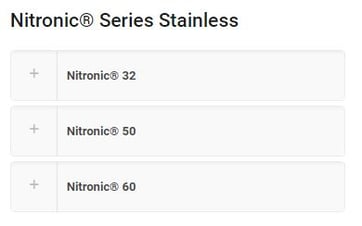The Difference Between Nitronic 50 and Nitronic 60
In addition to traditional 300 and 400 series stainless steel, Central Wire offers shaped and fine wire in both Nitronic 50 and Nitronic 60 alloys. These high quality alloys often outperform other stainless steel materials in harsh environments where corrosion and wear are primary concerns. So, what are the differences between these two alloys, and what makes them highly resilient to stress and wear?
Nitronic 50 Nitronic 50 stainless steel is stronger and more corrosive resistant than any other commercial material of its caliber. It is a high-performance austenitic stainless steel that contains increased amounts of chromium and molybdenum, which offers twice the yield strength of other 300 series alloys. Nitronic 50 generally offers better corrosion resistance than both 304 and 316 stainless steel alloys, and it does not become magnetic when it is cold worked. It is highly resistant to sulfide stress cracking which is why it is often employed in sour, salty environments such as oil rigs and marine applications.
Nitronic 50 stainless steel is stronger and more corrosive resistant than any other commercial material of its caliber. It is a high-performance austenitic stainless steel that contains increased amounts of chromium and molybdenum, which offers twice the yield strength of other 300 series alloys. Nitronic 50 generally offers better corrosion resistance than both 304 and 316 stainless steel alloys, and it does not become magnetic when it is cold worked. It is highly resistant to sulfide stress cracking which is why it is often employed in sour, salty environments such as oil rigs and marine applications.
Nitronic 60
Like Nitronic 50, Nitronic 60 is an austenitic stainless steel with distinct physical characteristics. Though it is less tolerant to corrosion than Nitronic 50, its high manganese and silicon content makes it extremely resistant to galling and wear. Galling traditionally appears when two metal surfaces weld themselves together due to repeated sliding or rotating, which is why Nitronic 60 is often used for high-use fasteners and valve stems. The yield strength of Nitronic 60 is about twice that of type 304 and 316 stainless steels, and it still withstands harsher environments better than 304.
We offer fine and shaped wire in Nitronic 50 and 60 stainless alloys meant to withstand challenging conditions. To learn more about the chemical composition of these products, visit https://centralwire.co.uk/alloys/, or contact us today.
